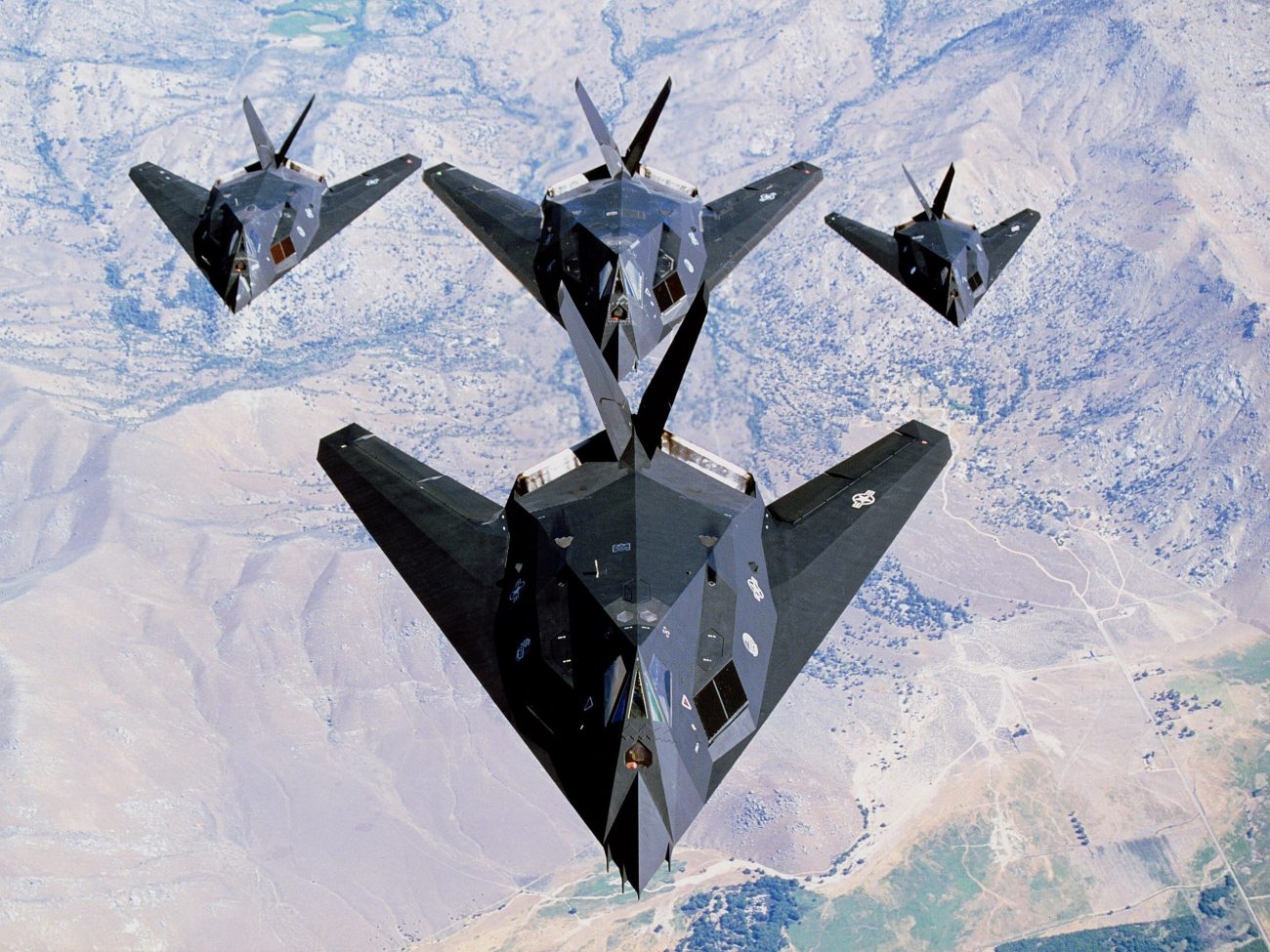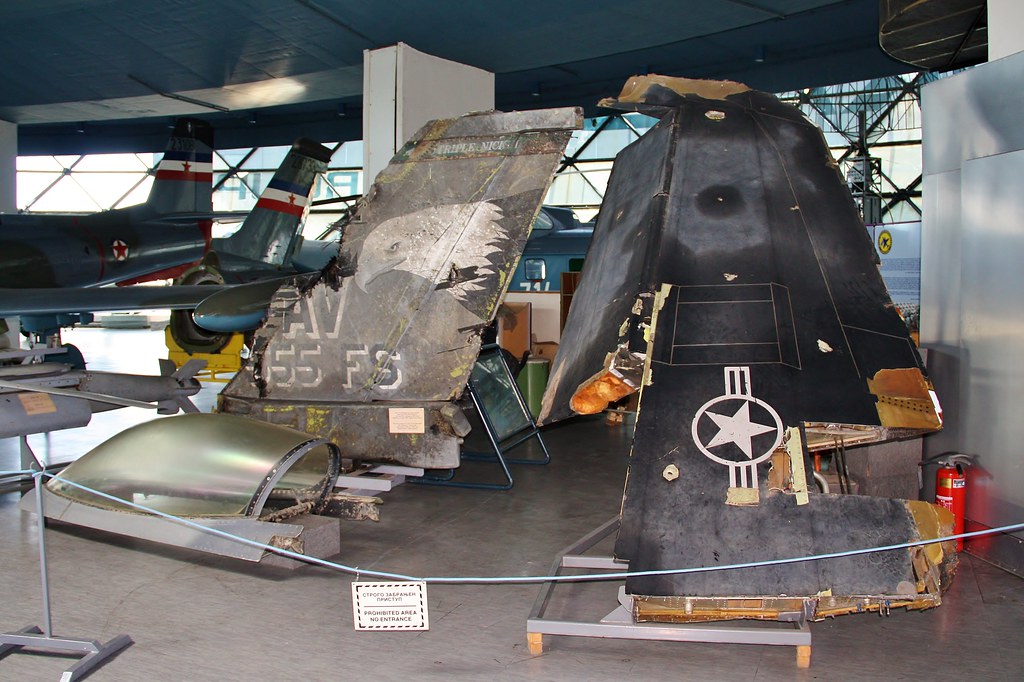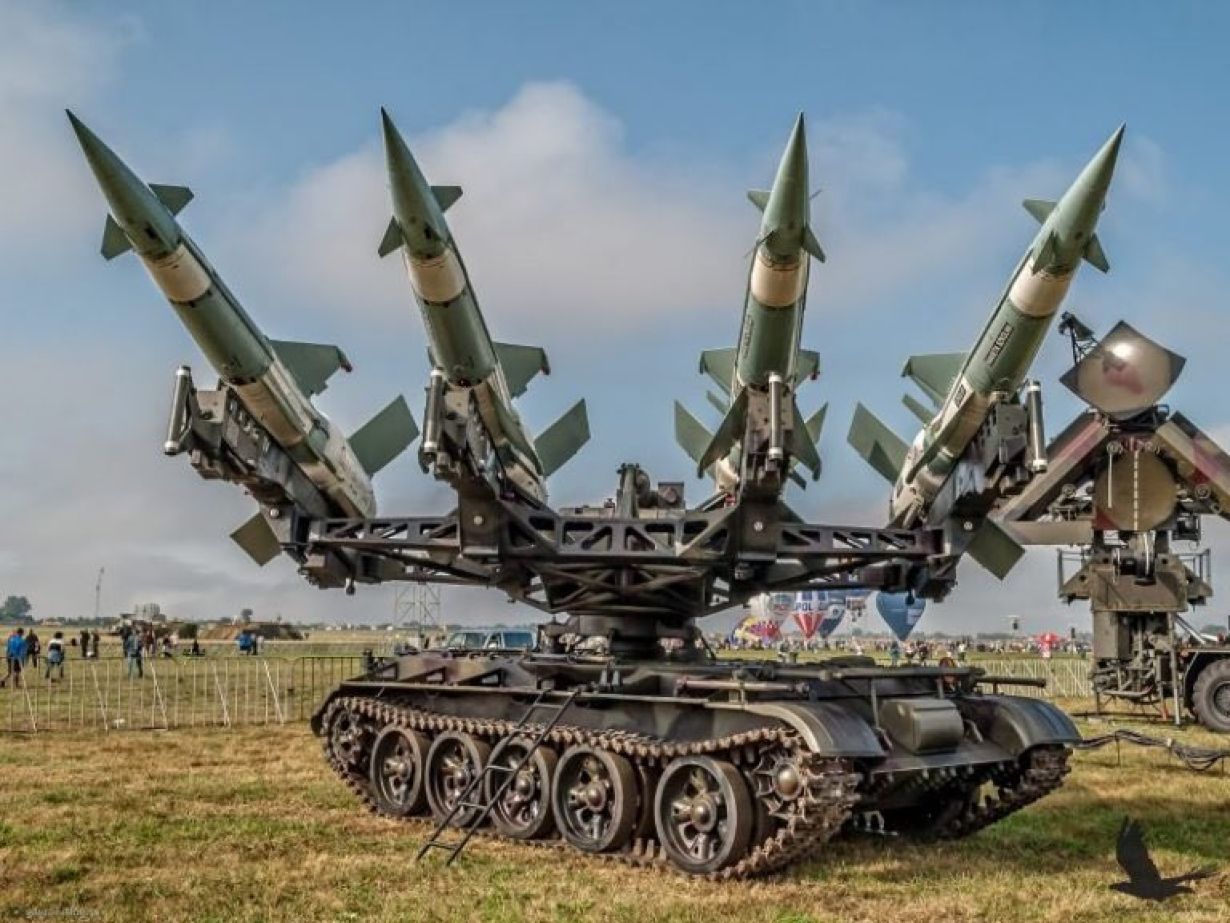Stealthy aircraft are often perceived as invincible due to their ability to minimize radar signatures and operate effectively in hostile environments. Yet, beneath the veneer of invincibility lies a sobering reality.
In 1999, during the NATO bombing campaign known as ‘Operation Allied Force,’ the world witnessed a stark demonstration of the vulnerability of American stealth aircraft.
On March 27, 1999, the F-117 Nighthawk, heralded as the world’s first operational stealth aircraft, was shot down by a Yugoslav army unit, dispelling the perception of invulnerability associated with stealth technology.
Back then, when stealth capabilities were being hailed as revolutionary, the incident dealt a major blow to the credibility of the United States’ ‘invisible technology.’
The F-117, a pinnacle of decades of stealth research and development, was designed to be America’s premier asset in countering the Soviet Union. Despite its first flight occurring in 1981, its existence remained classified to the public and much of the government until 1988.
Even now, it is often referred to as the “stealth fighter,” though it lacks air-to-air capabilities because its design was tailored for carrying out precision attacks rather than engaging in aerial combat.

The Gulf War served as the ultimate test for the F-117, thrusting it into the heart of combat. Despite comprising less than three percent of the coalition’s air assets, F-117s were tasked with over 30 percent of the mission objectives, predominantly targeting Baghdad, renowned as one of the most heavily fortified cities worldwide.
The F-117 demonstrated its prowess throughout the conflict and successfully neutralized more than 1,500 critical targets without suffering a single loss.
However, this success didn’t dismiss the reality of warfare, which emphasizes the unpredictability of adversaries.
Regardless of the sophistication of intelligence or the perceived superiority of one’s forces, adversaries can devise unexpected strategies, necessitating quick adaptation. Illustrating this point, U.S. pilot Col. Dale Zelko’s second mission during the Kosovo War provides a compelling example.
The Demise Of The F-117 Nighthawk Over Serbia
On March 27, 1999, at 8 p.m., an F-117 Nighthawk, operating under the call sign Vega-31 and dubbed “Something Wicked,” was flying above Serbia. Moments earlier, it had unleashed its payload of two Paveway laser-guided bombs on targets near Belgrade, the capital of Yugoslavia.
Guiding this mission was the seasoned pilot, Lt. Col. Dale Zelko, a veteran of the 1991 Gulf War. This mission was part of Operation Allied Force, a NATO bombing campaign launched in response to President Slobodan Milosevic’s brutal ethnic cleansing campaign against the Kosovar Albanian population.
A group comprising twelve F-117 Nighthawks was deployed to Aviano, Italy, on February 21. The NATO-led bombing campaign was devised to exert pressure on Belgrade, compelling the withdrawal of its military presence from the embattled province of Kosovo.
The Yugoslav National Army was armed with a mix of S-75 and S-125 surface-to-air missile systems alongside more modern 2K12 Kub mobile SAMs and MiG-29 Fulcrum twin-engine fighters.
Despite posing a moderate threat, these defenses forced NATO aircraft to fly at higher altitudes and required the assistance of radar-jamming planes, such as the EA-6B Prowler.

However, fate had a different plan for “Something Wicked” that evening. Adverse weather conditions grounded the Prowlers, leaving the Nighthawks vulnerable. Nevertheless, they pressed on, their angular design minimizing radar detectability and enhancing their survivability against anti-aircraft threats.
During the mission, Zelko spotted two bright dots ascending rapidly from the clouds below. These were radar-guided missiles launched from an S-125M Neva surface-to-air missile system, hurtling towards them at three-and-a-half times the speed of sound.
Despite the evasive maneuvers, one of the missiles detonated its warhead, engulfing “Something Wicked” in a maelstrom of destruction.
The aircraft lost control and rushed towards the ground in a terrifying descent. The gravitational forces were so intense that Zelko barely managed to engage the ejection mechanism, narrowly escaping the doomed Nighthawk.
How Did An Old Russian-Made Missile Brought Down A Stealth Aircraft?
On that eventful evening, Lt. Col. Dale Zelko found himself in a high-stakes aerial chess match against Serbian Col. Zoltán Dani, commander of the 250th Air Defense Missile Brigade.
Dani, known for his strategic acumen and meticulous study of Western air defense tactics, had meticulously honed his unit’s capabilities to counter NATO air operations.
Unlike his counterparts in the Middle East, Dani eschewed static defense postures and opted instead for frequent redeployments of his Neva surface-to-air missile (SAM) batteries.
By halving the number of launchers in his battery and drilling his crews to expedite relocations, Dani slashed the standard redeployment time from 150 to 90 minutes, enabling his unit to maintain agility on the battlefield.
Moreover, Dani employed decoy SAM sites and dummy targeting radars scavenged from old MiG fighters to confound NATO’s anti-radiation missiles. This cunning ploy, combined with constant movement, shielded Dani’s unit from harm, with not a single SAM battery lost despite NATO’s barrage of HARM missiles.
Dani’s innovative use of the P-18 “Spoon Rest-D” radar, tuned to the lowest possible bandwidth, provided rudimentary tracking of Nighthawks within a 15-mile radius—beneath the detection threshold of NATO radar-warning systems.

Exploiting this blind spot, Dani gleaned valuable insights into NATO flight patterns by intercepting communications between U.S. fighters and airborne radar planes and piecing together a comprehensive picture of their routines.
Furthermore, Dani tried to orchestrate an ambush for the returning stealth jets, capitalizing on the limited detection range of high-band targeting radars and the vulnerability of stealth aircraft during bomb release when their radar cross-section briefly bloomed.
Despite multiple failed attempts, Dani’s persistence paid off when an S-125M battery locked onto “Something Wicked” a mere eight miles away, sealing the fate of the ill-fated Nighthawk.
In the aftermath, Zelko miraculously escaped from Serbian search parties, followed by a daring rescue operation by an Air Force combat search and rescue team. Meanwhile, Dani’s unit claimed another victory by downing a US F-16, solidifying their reputation as formidable adversaries.
While the shootdown of “Something Wicked” was a setback for the U.S. Air Force, it served as a cautionary tale about the fallibility of stealth technology. Despite their vaunted invisibility, stealth aircraft remain vulnerable to cunning adversaries like Col. Dani, whose innovative tactics continue to shape air defense strategies.
China’s J-20 Born Out Of The Downed U.S. Stealth Aircraft?
Shortly after over a month following the downing of a US F-117 Nighthawk stealth fighter by a Russian-made surface-to-air missile in May 1999, the Chinese embassy found itself under attack by five precision-guided bombs launched from the US B-2 stealth bombers.
In response to the incident, the U.S. issued an apology, attributing the bombing to an accident during a NATO operation targeting a nearby Yugoslav facility.
Despite this apology from then-President Bill Clinton, the Chinese government contested the explanation, alleging deliberate targeting by the U.S. military. However, they failed to provide concrete evidence to support their claim of intentional bombing.
Some reports suggest an alternative motive for the targeting of the Chinese embassy: the presence of wreckage from the downed US F-117 Nighthawk stealth fighter in the Chinese Embassy. This wreckage, scattered across farmland, attracted major attention from the Chinese.
According to Admiral Davor Domazet-Loso, then military chief of staff in neighboring Croatia, Chinese agents actively sought and purchased parts of the downed plane from local farmers.
The wreckage of the F-117 Nighthawk, a stealth aircraft developed by Lockheed Martin, attracted global attention due to its significant research value. It is believed that China sought to gain insights into stealth technologies by acquiring and possibly reverse-engineering these materials.
Reports indicate that China successfully negotiated with the Yugoslavian government to obtain key wreckage components, including the guidance system, main body, and heat-resistant engine-nozzle parts.
Due to the sensitivity of transporting these materials, China reportedly stored them temporarily in the basement of their embassy. However, the U.S. military allegedly detected signals emanating from the wreckage and became aware of its location in the embassy’s basement.
Subsequently, B-2 bombers were deployed to prevent the potential leakage of military secrets to China. While one of the bombs reached the basement, it failed to detonate, leaving the wreckage intact.
Following these events, China dedicated ten years to enhancing its stealth technology and conducting extensive research on laser-guided missiles. Some claims suggest that technology utilized in China’s J-20 stealth fighter may have originated from insights gleaned from the downed F-117 aircraft.
- Contact the author at ashishmichel(at)gmail.com
- Follow EurAsian Times on Google News




